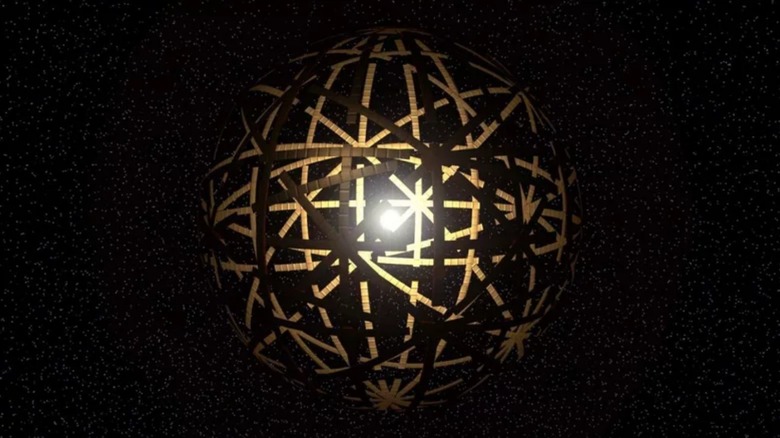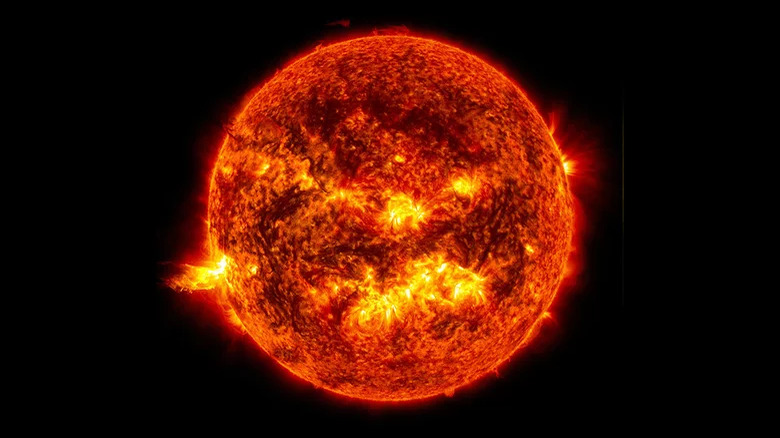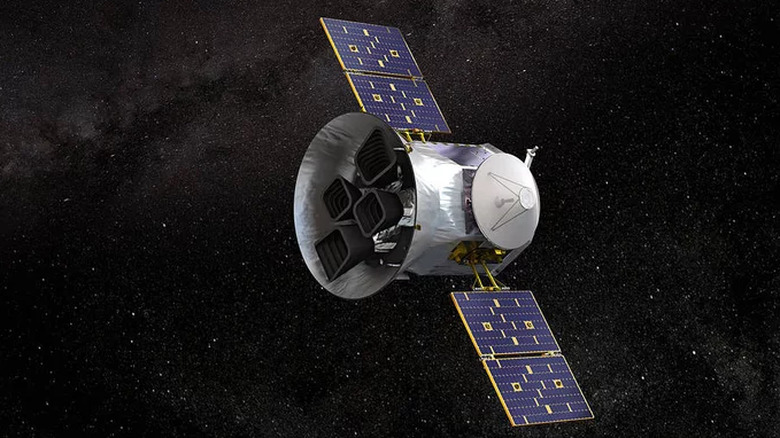What Is A Dyson Sphere And Why Haven't We Built One?
The Dyson Sphere concept is a staple of science fiction, from Star Trek to the novels of Larry Niven, and it sounds like a dream come true: a way to harvest almost all of the immense energy output of a star, providing enough power for an entire civilization. These hypothetical structures are named after physicist Freeman Dyson, according to Space, who described the concept in 1960 and even suggested they could be a place for humans to live beyond Earth.
The basic idea of a Dyson Sphere is simple. Instead of putting up solar panels which collect the Sun's energy from Earth, we could build a giant structure around the Sun to collect energy from it directly. This sphere of solar panels close to the Sun's surface would be far more efficient than having solar panels on Earth, providing more than enough power for the entire planet.
So why haven't we built one yet?
The challenges of building a Dyson Sphere
Building a structure around our Sun would be no easy task. The biggest problem is one of gravity, as the Sun is so massive that it would pull in and destroy any shell which we attempted to erect around it.
According to Popular Mechanics, a more realistic approach would be a Dyson Swarm. This would be a group of thousands of solar panels in orbit around the sun, which would be able to capture most of the Sun's energy without the gravity problems of a sphere. This has the advantage of being easier to manufacture as well, as panels could be put in place one at a time, which would be much simpler than trying to build an entire solid structure in space.
The raw materials required for constructing a swarm, however, would be immense. Not to mention the industrial capacity required to pump out so many small spacecraft and the logistics of getting them all launched and in position. And then there's the matter of transferring that energy back to Earth. We're working on wireless power transfer but we're not ready to beam energy across the solar system just yet.
While the structure is potentially possible to build, it's far beyond our current abilities as a species.
Searching for Dyson Spheres elsewhere in the universe
So, humanity won't be building its own Dyson Sphere any time soon. But the concept may be of more practical use than you imagine, in terms of the search for extraterrestrial intelligence.
When it comes to looking for alien life, one big problem is that it's hard to see direct evidence of life from so far away. We're looking light-years away from our own planet, and we can't see exoplanets in enough detail to know whether they are inhabited.
However, we can more easily look for evidence of alien technology, called technosignatures. The idea is to search the sky for indications of technology, such as chemical pollutants in a planet's atmosphere which don't occur naturally. If we found such a signature, that would be an indication that there was or had been life there.
And if an alien civilization did build a Dyson Sphere, it could leave a detectable technosignature in the form of infrared radiation.
As far-fetched as this sounds, it isn't completely beyond the bounds of possibility. NASA is even supporting the search for alien megastructures via the Breakthrough Listen project, which uses the agency's Transiting Exoplanet Survey Satellite (TESS) to look for technosignatures.
So don't expect a Dyson Sphere around the Sun to appear within our lifetime, but this concept which started as science fiction could one day play a role in determining whether we're alone in the universe.


